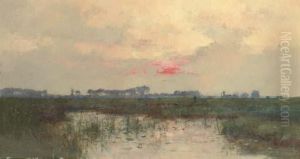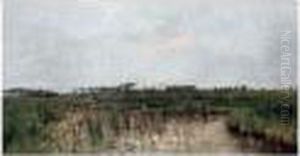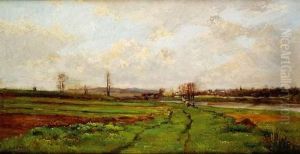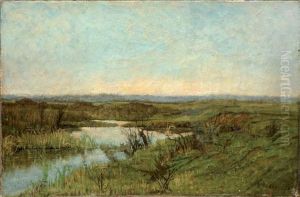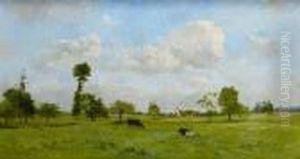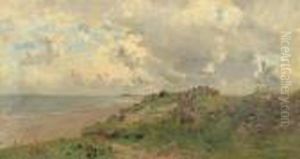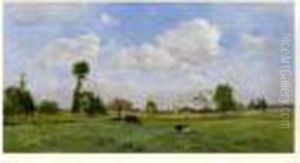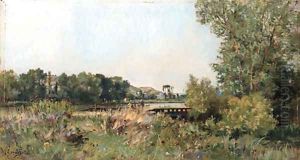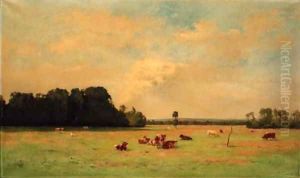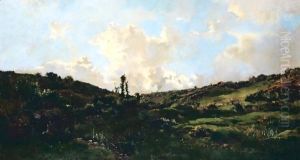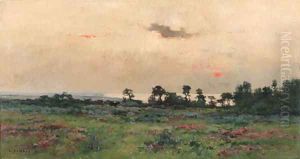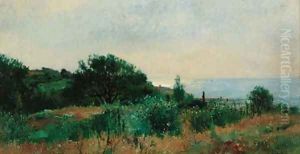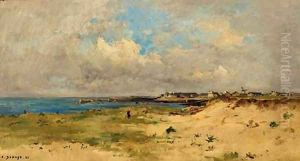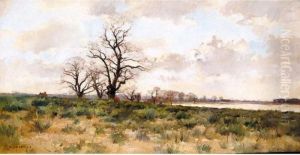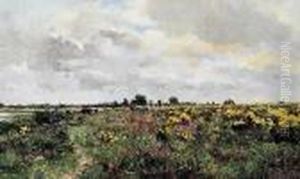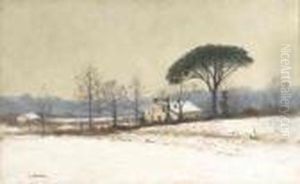Pierre-Emmanuel Damoye Paintings
Pierre-Emmanuel Damoye was born on February 20, 1847, in Paris, France. He emerged as a distinguished landscape painter within the French Barbizon School, a movement that emphasized naturalistic and often idealized depictions of the landscape. Damoye's early life and education in art took place in a vibrant artistic atmosphere of Paris, which was the hub for innovative art movements during the 19th century.
Damoye trained under influential artists such as Ernest Hébert and Émile Lambinet, which deeply shaped his style and focus. His style is characterized by a delicate handling of light and a soft, yet precise, application of color. His landscapes often depicted the rural settings around Normandy and the Seine valley, areas that he frequently visited and found great inspiration in.
Throughout his career, Damoye exhibited his works at the Paris Salon, an annual art exhibition established by the French government. His contributions to landscape painting were recognized with several awards, and he gained considerable acclaim during his lifetime. Not only was his work celebrated in France, but it also gained recognition abroad.
Damoye's artistic legacy is marked by his ability to capture the tranquil and often ephemeral qualities of the French countryside, rendering it with an emotional depth that resonates with the Barbizon School's ideals. His paintings continue to be admired for their serene beauty and technical proficiency. Pierre-Emmanuel Damoye passed away on April 4, 1916, leaving behind a body of work that continues to be studied and appreciated in the context of French landscape painting and the broader Impressionist movement.













